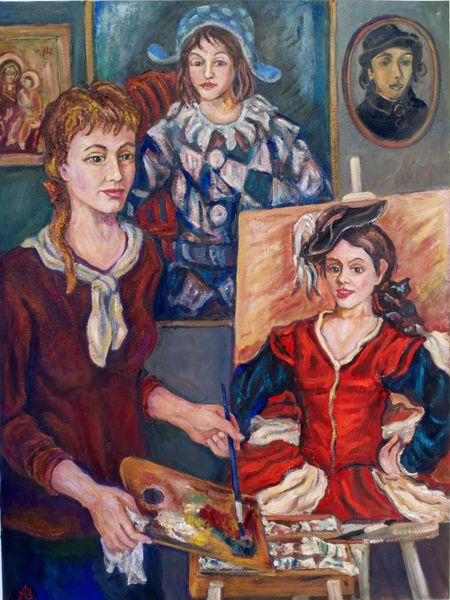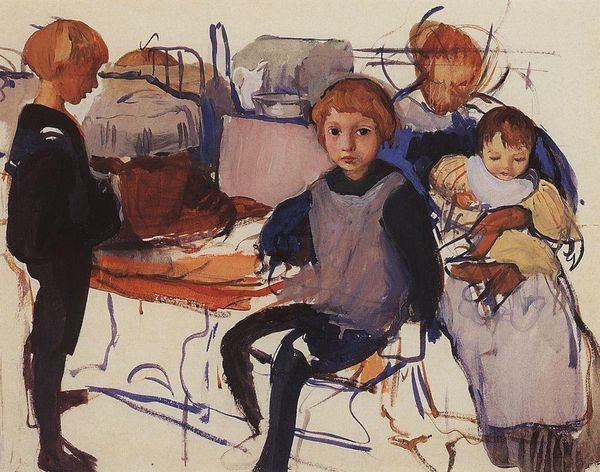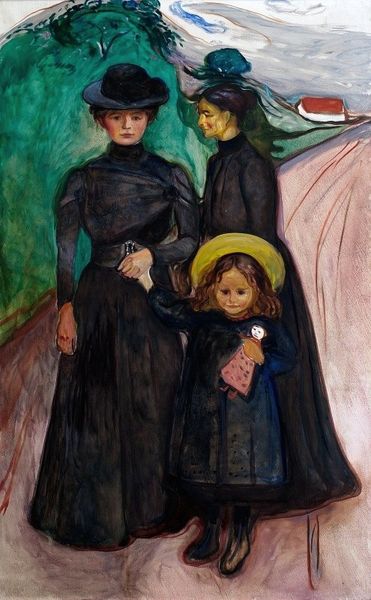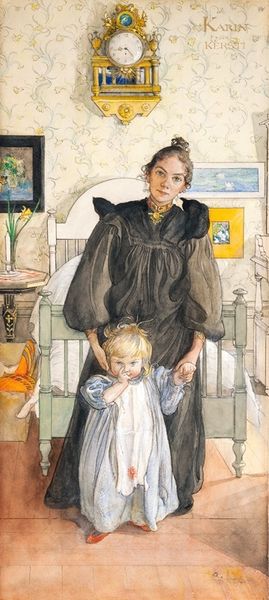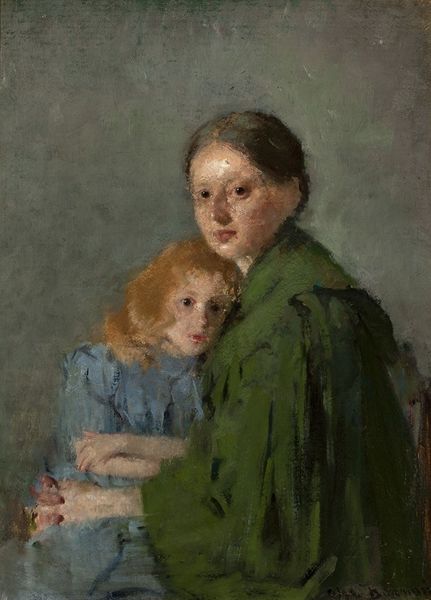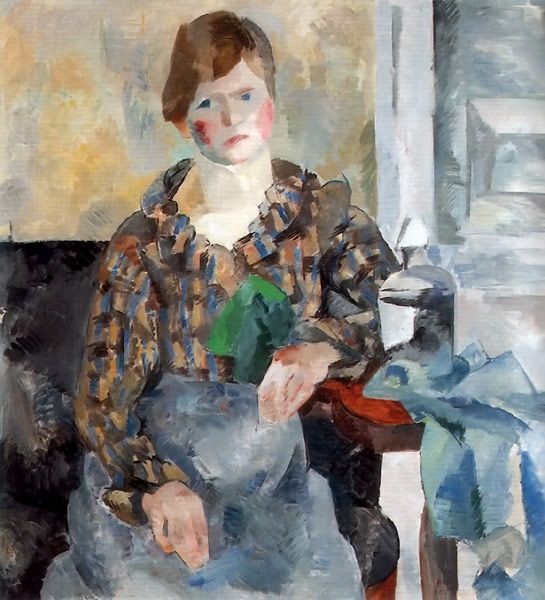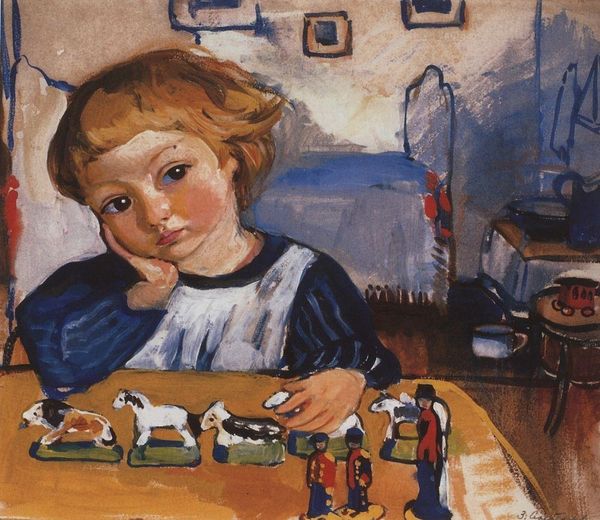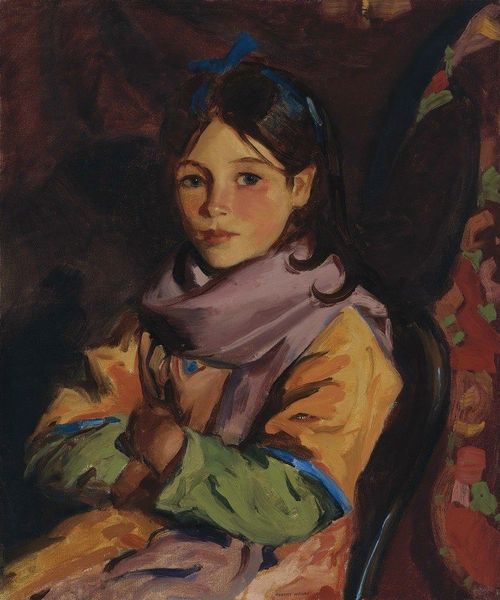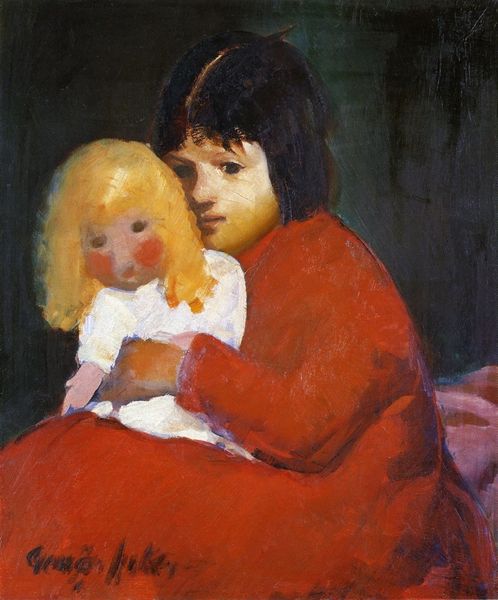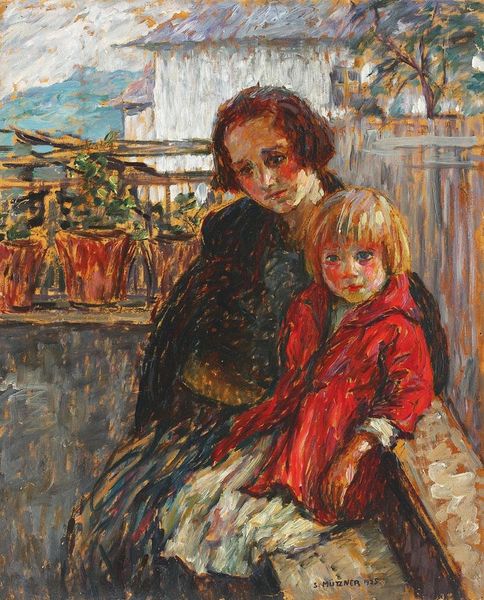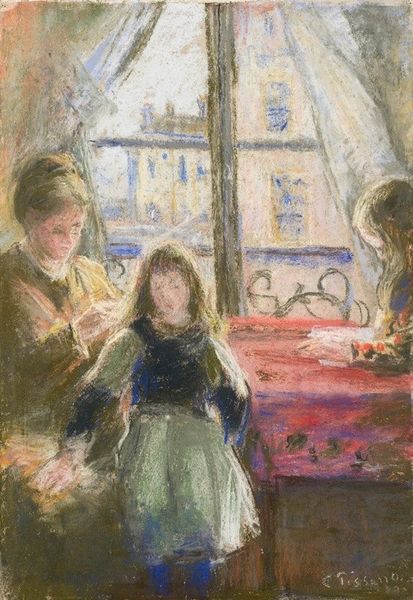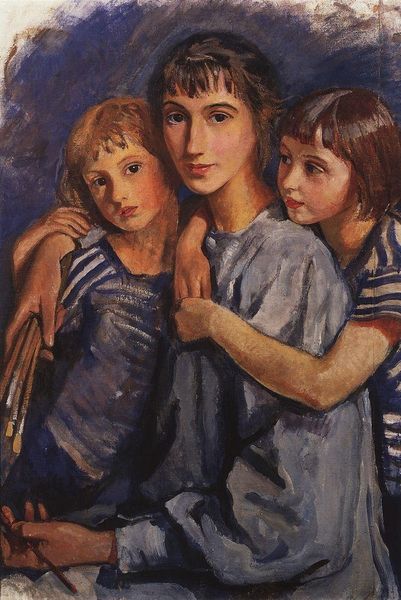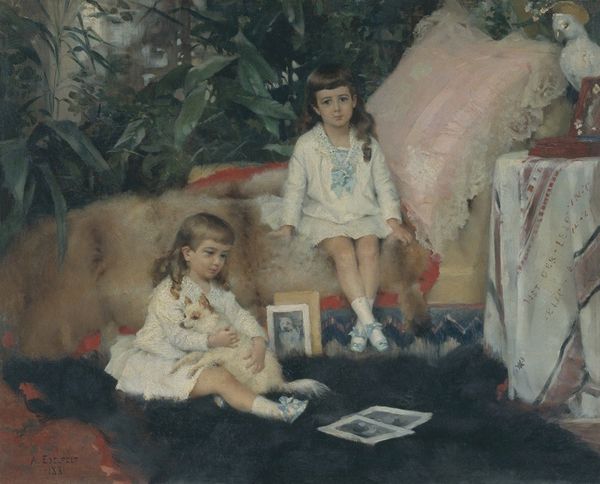
pastel
#
portrait
#
oil painting
#
child
#
intimism
#
pastel
#
watercolor
#
realism
Copyright: Public domain US
Curator: Standing before us is Zinaida Serebriakova's pastel drawing, "Katya," created in 1923. Editor: There's something intensely private and a little melancholic about this. A young girl holding her dolls, surrounded by everyday objects. Curator: Precisely. Serebriakova made this in a period marked by profound societal shift. Following the Russian Revolution, there were severe shortages, impacting the availability of materials like paint. Pastel, being more readily accessible, became a preferred medium for many artists. Editor: That makes sense. You can really see the texture of the pastel on the slightly rough paper. But it is fascinating to consider how something as basic as material accessibility can inform a shift in artistic style and production. The texture also feels raw and direct; you don't get the same sense of smoothed-over finish that you'd find in much oil painting from earlier eras. Curator: I agree. And observe the compositional arrangement – the girl centrally placed, surrounded by dolls that mimic miniature versions of adults, and other, everyday objects like plates and tea cups. The way those items are included offers a small window onto domestic routines, a snapshot of early childhood socialization. The artist has positioned Katya so she occupies both roles of 'child' and 'mother' at once, as she holds those child dolls. Editor: There's a muted quality to the palette. It creates a palpable atmosphere of fragility. Considering it was made after the upheaval of the revolution, it suggests a desire for simpler, more innocent times, which is not uncommon after traumatic events. I also find myself wondering if this "Katya" has remained known because it resonated as an artifact for a time of extreme social and material strain, using more common and convenient media. Curator: Possibly. Serebriakova's piece offers insight into the lived experiences of children of this specific period. She also chose subjects with a powerful tie to labor: other paintings of hers represent female peasants working in the fields or in other rural tasks. Editor: Considering all of these contexts, it provides an interesting look into childhood identity, and what was left in artistic practices after larger political events, as conveyed through materials, in post-revolutionary Russia.
Comments
No comments
Be the first to comment and join the conversation on the ultimate creative platform.
